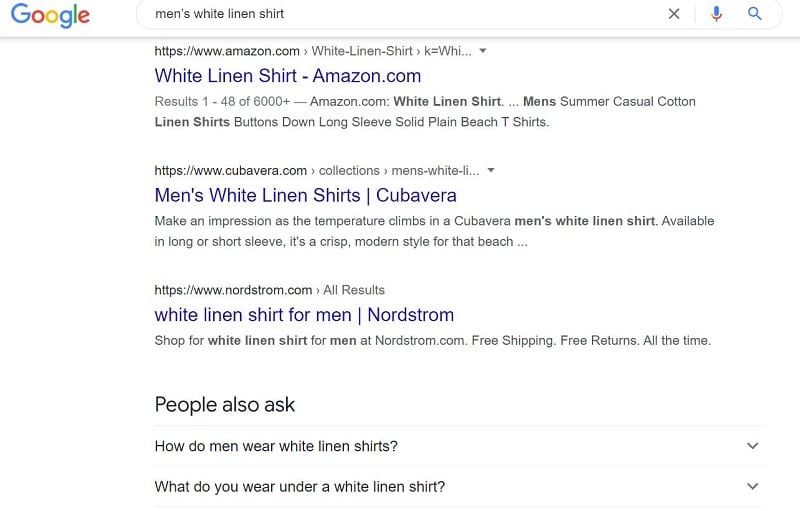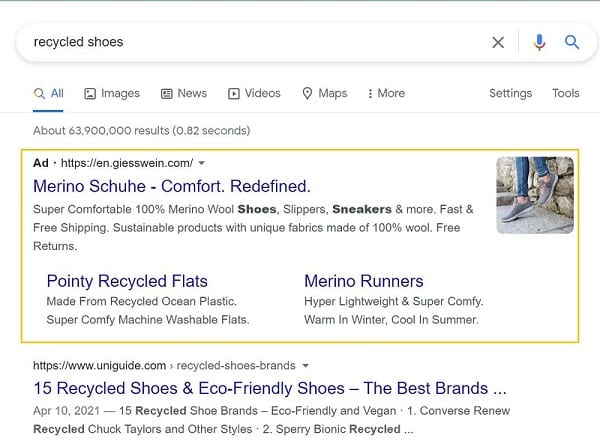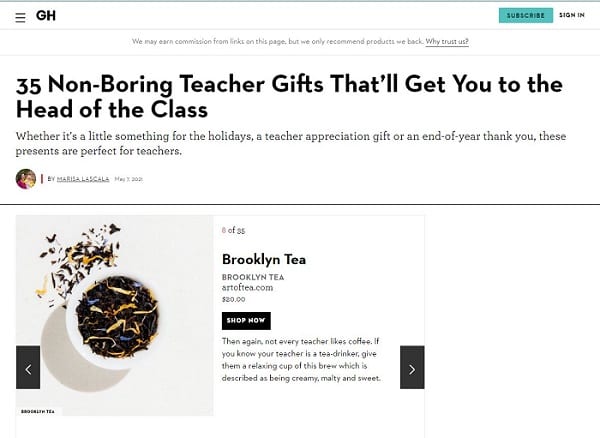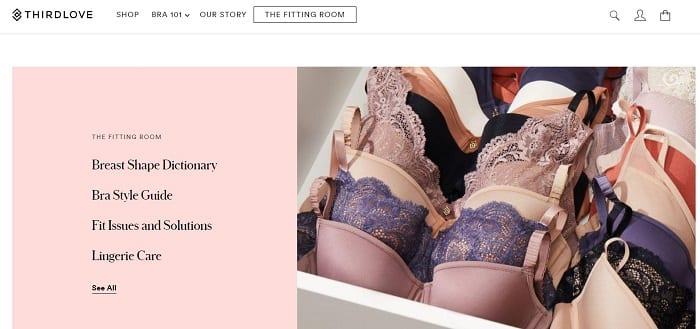The global pandemic has given an unprecedented push to ecommerce and many businesses have been forced to go digital. Maybe you too are new to selling online and asking yourself if you should be doing ecommerce marketing.
Between choosing an ecommerce platform, building your ecommerce website, and trying to keep sales coming, it can be hard to take on one more strategic task. But that’s where ecommerce marketing comes in. This guide will introduce you to the concept, along with the best strategies to turn your business into a successful ecommerce.
You’ll find answers to:
But first, do you run an ecommerce store? What is an example of ecommerce?
Ecommerce is a business that sells products through a website. It's synonymous with an online store. These products can be physical like shoes, cosmetics, books, groceries, etc. Or they can be online courses, training programs and memberships, ready meal subscriptions, renting fashion items, and so on.
If you sell only your own products through a website, you’re a direct-to-consumer business. If you have both a brick-and-mortar and online shop, your model is a hybrid. Ecommerce retailers can also sell other brands’ products that they don’t produce themselves.
Now you know where you stand in the world of selling online, let’s dive into marketing your ecommerce business.
What is Ecommerce Marketing?
If you as an ecommerce business owner need to do ecommerce marketing, we’d better define what it is exactly, right?
Ecommerce marketing definition
Ecommerce marketing is any marketing effort you do to promote your online store and generate sales. It applies both to getting new customers (customer acquisition) and making old ones shop again (customer retention).
Ecommerce marketing does the following:
Without ecommerce marketing, you wouldn't make any sales. Launching your ecommerce site is not enough — people need to discover you before they spend money with you.
More than this, you need to constantly remind them of your brand so they come back again and again, generating revenue.
What Are the Types of Ecommerce Marketing?
Ecommerce marketing spans virtually all digital marketing channels as well as some offline, traditional ones:
Let’s look at the ecommerce marketing strategies most popular among ecommerce marketers. You’ll get a full picture of the many possibilities to help you decide which best fit your brand.
Ecommerce SEO
Search engine optimization (SEO) is making your website more visible and easily discoverable on search engines (Google, Bing, etc.). It’s mostly about adding keywords to your site copy that potential customers would use when searching for products like yours. Then, the search engine recognizes you have what they want and shows you high in the results.
This way, you capture people with high purchase intent — like someone searching for “men’s white linen shirt”. It’s also a chance to convert people who don’t know your brand. Finally, SEO is a free way of marketing your ecommerce business.

Ecommerce SEO should be done on product page copy, your home page (meta description too), and FAQ page. Starting a blog will also help boost your SEO. There, you can answer potential buyers’ questions such as, “How to wash a linen shirt?”
Email marketing
Email marketing is a key strategy for promoting your ecommerce. It’s a channel you own as it’s not controlled by a big company like Facebook, Google or Amazon. This makes it cheaper and very reliable.
All you have to do is choose an email marketing platform. Then, you can start building your email list and sending them email campaigns. The main features to look for are:
Looking for a platform to manage all your ecommerce emails in one place?
Check out Brevo’s ecommerce email marketing software. From transactional messages to automated journeys and list segmentation, it’s all on our free plan. Plus you’ll get unlimited contacts and up to 300 free email sends a day.
The more you know about your subscribers, the more relevant email campaigns you can send. A CRM added to your email tool will enable you to reach everyone at the right time with the right offer.
There are many types of emails you can send to engage and convert your subscribers:
If you’re unsure where to start, here’s our email marketing checklist and tips on how to build your ecommerce email strategy.

An example of a post-purchase email with the simple goal of making the buyer feel even better. Source
Conversion rate optimization
The measures you take to convert as many site visitors as possible is called conversion rate optimization. You’ve worked hard and/or paid for your traffic so you want it to result in sales. Traffic without revenue is nothing.
There are various tactics you can use on your website to drive sales:
To dive deeper, check out our guide to ecommerce optimization.

Live chat helps convert site visitors just like a sales assistant in a physical store
SMS marketing
SMS marketing is sending text messages for promotional purposes. It’s best for alerts, updates, and time-limited offers that need to be read immediately.
An example would be an automated SMS with a special discount going out on the morning of a customer’s birthday. Shipping updates are another key ecommerce communication that works well for SMS.
Just keep in mind that you need the contact’s permission to send them SMS. Also, some countries regulate this kind of marketing heavily so check before you send.

SMS marketing is great for limited-time offers
Organic social media marketing
This is your unpaid presence on social media platforms like Facebook, Pinterest, Instagram, TikTok and wherever else your audience hangs out. Today it's an absolute must to be discoverable on such sites. It’s a way for people to know you’re in business and often determines if they will visit your website at all.
When marketing for ecommerce, you can share company updates, educate about your products, and promote causes aligned with your brand values. Essentially any topic relevant to your target audience that’s likely to engage them!

In addition, you can set up social commerce, which is selling on Facebook, Instagram, and Pinterest directly. It’s an extra online sales channel for people who don’t want to go to your website to browse and buy products.
Paid social media marketing
Often organic social reach is not enough for ecommerce businesses and you might need to pay to play. This means two things in general — ads and influencer marketing campaigns on Facebook, Pinterest, Instagram, TikTok, etc.
Ad formats vary depending on the social media platform. You’ll have to test them to find what works best for your ecommerce store.

Find out more about how to create a Facebook ad that drives conversions.
Then, there’s influencer marketing — paying popular people on social media to promote your products. They can help you reach difficult audiences like eco-conscious moms or hardcore perfume fans. They also represent the product as part of a lifestyle so it enhances the brand image.
Some influencers charge a hard fee but others work on commission. You pay for the sales made through them, not for the exposure. Try working with different ones with followings of various sizes. You might find that the micro influencers convert better because they’re more focused and better fit your niche.
Search advertising
Apart from social media, you can pay for more exposure on search engines as well. The most popular options are:

An example of an AdWords campaign, Source
Affiliate marketing
Affiliate marketing is an interesting part of ecommerce marketing. It relies on a network of affiliates, or referrers, who drive traffic to your online store and get paid for each sale they help make.
It’s usually done through blog posts where they talk about your products or simply list their picks in a certain category. Influencers posting directly on social media and thus replacing affiliate marketing has been one of the ongoing ecommerce trends lately. Affiliate marketing is, however, still alive and thriving for Amazon sellers.
Partnerships
You can join forces with other companies in the form of a partnership to extend your reach to their audience as well. It’s an effective marketing strategy for lifestyle ecommerce brands with overlapping target customers.
For example, you can agree to swap email lists so each brand connects with more potential customers. Just label the email campaign properly so subscribers understand their details have not been sold. Another option is to create a special cross-brand offer for both brands’ clients.
PR and brand awareness
PR sounds outdated in ecommerce marketing but it’s not. Especially at launch, you’ll benefit from getting featured in media publications both offline and online.
It can be a founder interview, a mention in a listicle (X gift ideas for Y), or getting your headliner featured in a photoshoot. Whatever fits your product, the goal is to increase brand awareness and create demand.

An example of being included in a gift guide on Good Housekeeping.
And let’s not forget events and sponsorship opportunities. Going offline and meeting your customers in real life is a great exercise for ecommerce businesses. Local fairs, pop-up stores, and themed expos are not to be overlooked in ecommerce marketing.
The best practice here is to choose the events you support carefully to get closer to your target and not alienate them.
Ecommerce content marketing
Content is another marketing tactic that can bring long-term results to ecommerce businesses. It comes in many formats:

Example of ecommerce content — the whole blog helps convert visitors to customers, Source
The goal of content marketing is to answer questions, educate, expand the company narrative, help people choose a product, and even entertain.
It’s your chance to tell your story, share your expertise and values, overcome potential objections, and reassure potential or current customers you’re a good business to shop from.
The best thing about content is that, once created, it’s out there working for you. When optimized for search and easily found on site, it can boost your conversion rate. It can also be reused for other ecommerce marketing campaigns such as newsletters, organic social, and partnerships.
10 of the Best Ecommerce Marketing Strategies
What is an ecommerce marketing strategy?
An ecommerce marketing strategy is the tactics you plan to use to promote your online store and get more sales. The strategy is a long-term idea of where your ecommerce business is going. It’s based on your knowledge of the market, trends, consumer research, brand values, and product.
Ask yourself:
The answers to these questions will help you pick your “battle weapons” from the ones outlined above, a.k.a. marketing tactics that best fit your needs and abilities.
As for the best ecommerce marketing strategies, there’s no right answer.
Ecommerce is a huge industry, with countless products, business models, and target groups, making it impossible to pinpoint just one best practice. What works for one seller with a specific product won’t necessarily work for another selling something else to another audience in a different market.
Here are just some universal marketing tips that will help you create and enhance your ecommerce marketing strategy.
1. Define your target audience and market
To be able to find the right voice, messaging, channels and offers, you need to understand your audience first.
2. See what your competitors are doing
Some of it is probably working — there’s no point reinventing the wheel. But look for what can be done better too. This can become your competitive advantage.
3. Set targets based on benchmarks
Before you have data of your own, base your projections on industry benchmarks. This will give you a direction to work in.
4. Research marketing tools that can help you
As you’ve seen, there’s so much to ecommerce marketing that it can be overwhelming. Luckily, there are tools to help you get started with many of the tactics mentioned at an affordable price.
5. Add more marketing channels as you find your ground
Once you feel your initial marketing setup is working, expand to other channels and tactics. For example, you can add a live chat when you have a dedicated customer service person.
6. Automate as much as possible
To be able to scale, small businesses need sales coming in on autopilot. The more you can run hands-off, the better. This is where marketing automation tactics like bulk emails, automated workflows, notifications, and lead scoring come in handy.
7. Personalize your communication
Ads, emails, SMS, and live chat bring in much better results when personalized and relevant. Customers like the experience of being understood and not getting just another generic message.
8. Measure your ecommerce marketing results, refine and reuse what works
The only way to know if an ecommerce marketing strategy is working is to track the return on investment (ROI). The campaigns that don’t bring results are not worth wasting money on. For the ones that do work, try to use them for a bigger audience, rinse and repeat.
9. Build loyalty into your strategy
Customer loyalty is good news: it boosts profits, improves your brand image, attracts new customers who‘ve heard about you from fans. And it has a long-term impact so start working on it as early as possible. Loyalty tiers, automations, and behavior insights from CRM will help you.
10. Focus on profitability, not just sales
If you pay to get new customers all the time, that might shave off your profit. One-off sales come out more expensive for you because of ad prices, as well as more returns and exchanges (new customers don’t know their size, etc.). It’s cheaper to drive repeat sales to current customers.
How to Write an Ecommerce Marketing Plan
An ecommerce marketing plan is your schedule for the activities included in your strategy. It’s a road map for how you’ll achieve your ecommerce marketing goals.
When starting out, keep it simple. Choose a few marketing tactics that fit your brand and that you can set up easily.
What does a marketing plan for ecommerce look like?
Here’s a breakdown of your first year’s marketing activities that will create brand awareness, attract customers, and keep them buying.
What is Ecommerce Marketing? Essential to Ecommerce Success.
You see that without ecommerce marketing, your online store pretty much doesn’t exist. The only way to get the word out, to attract customers, and to generate (repeat) sales is through intentional marketing activities.
Ready to get started? Check out Brevo for all the tools to kickstart your ecommerce marketing strategy. Try transactional and promotional email campaigns, SMS, automation, and live chat — all on our free plan. Plus plugins for major ecommerce platforms make it easy to link Brevo to your online store.
To make sure your ecommerce marketing stays top-notch year-round, download our 2024 holiday marketing calendar! It's full of important dates and helpful marketing advice for every month of the year.







